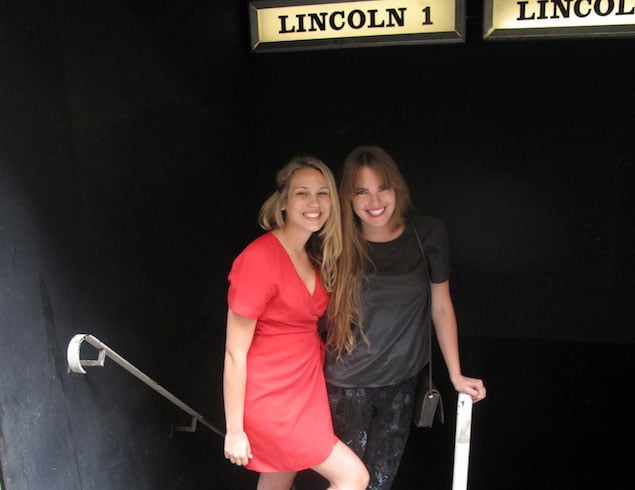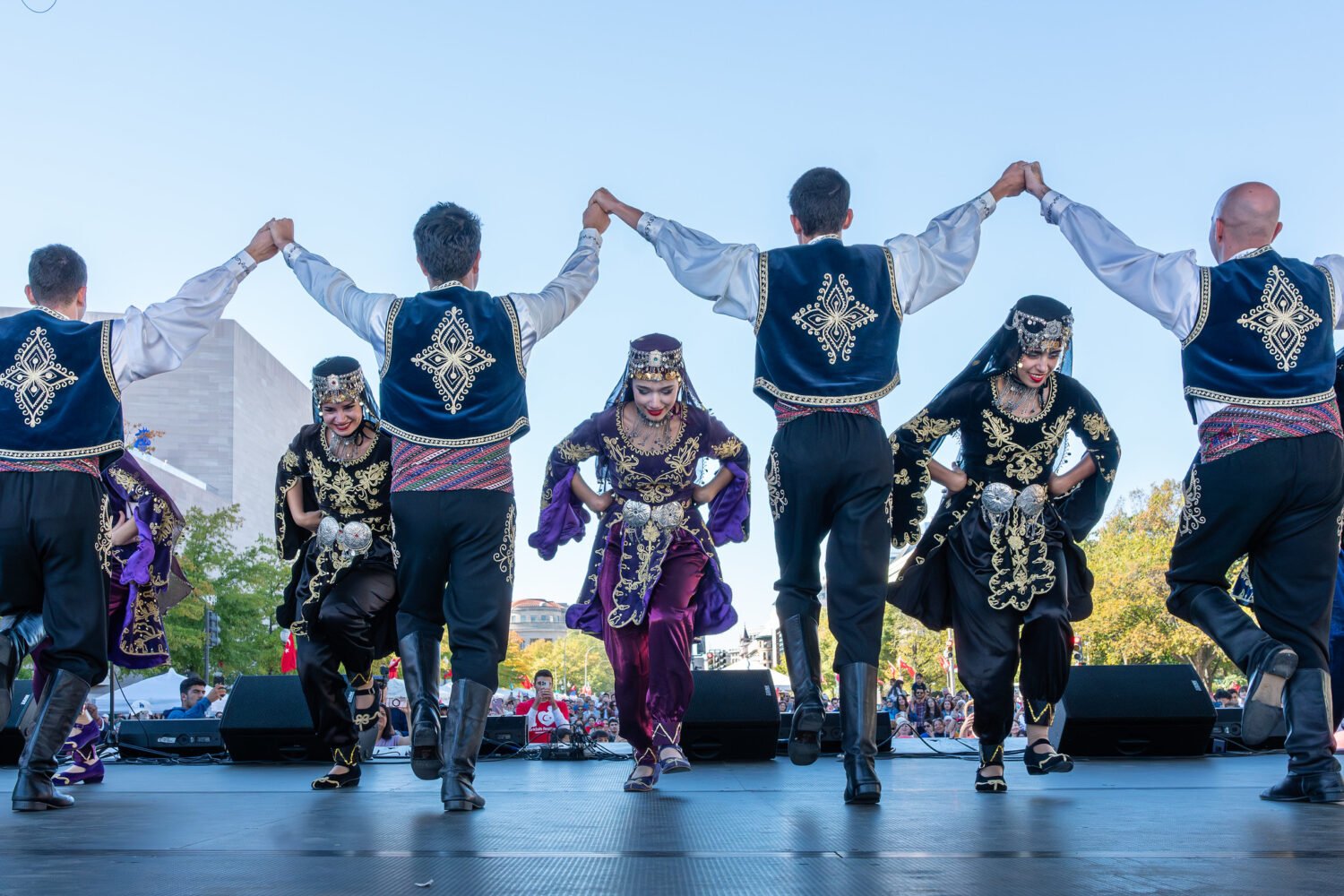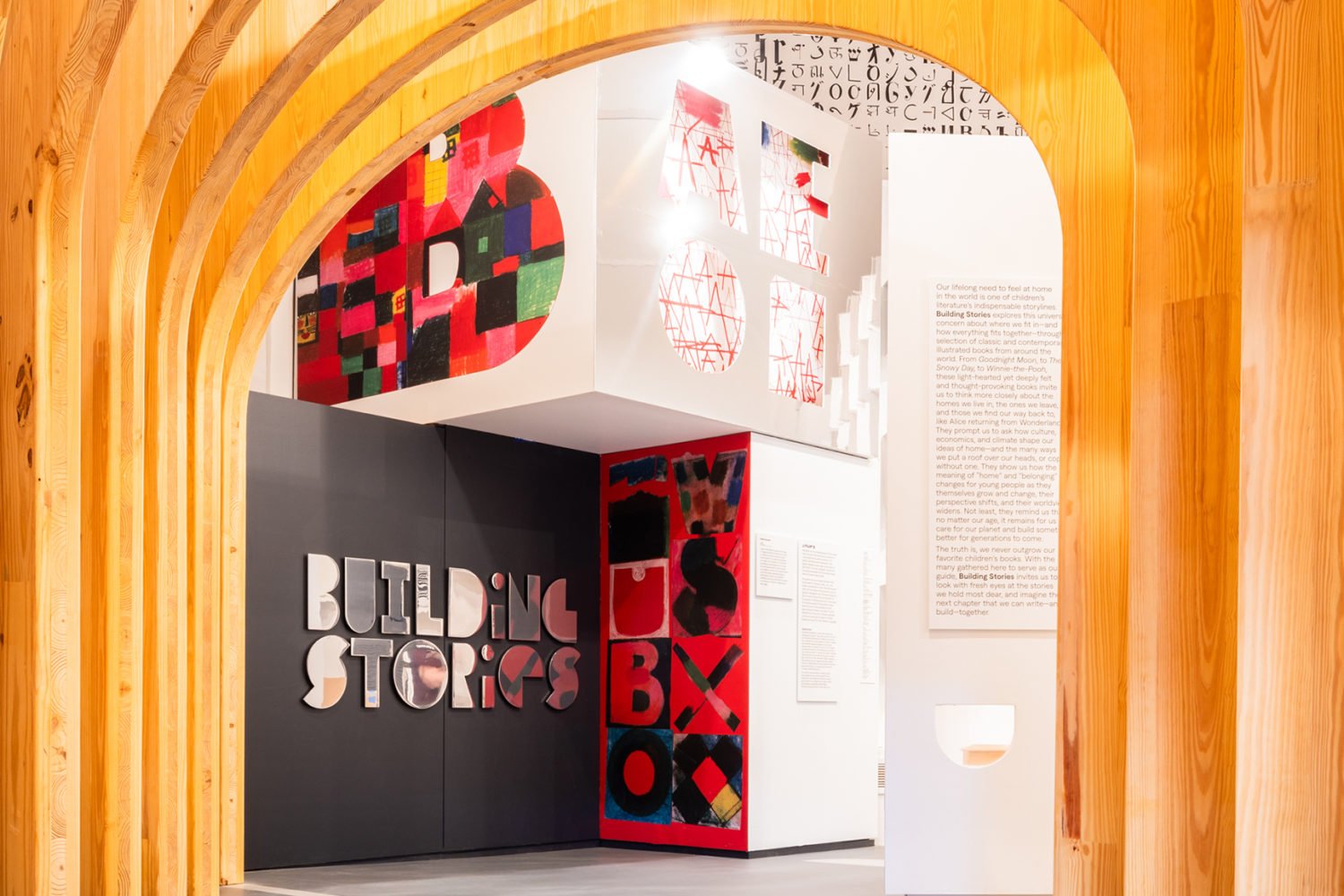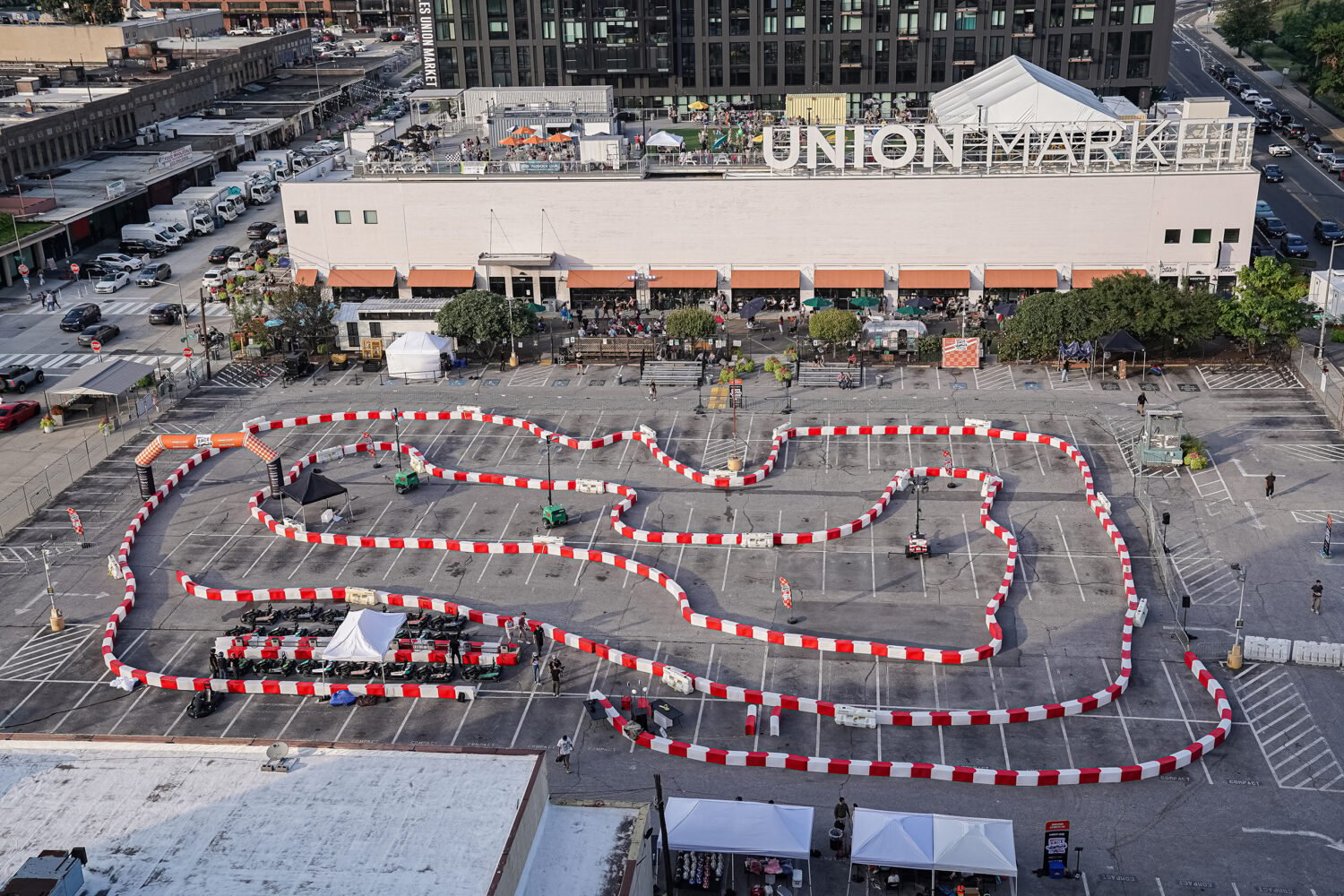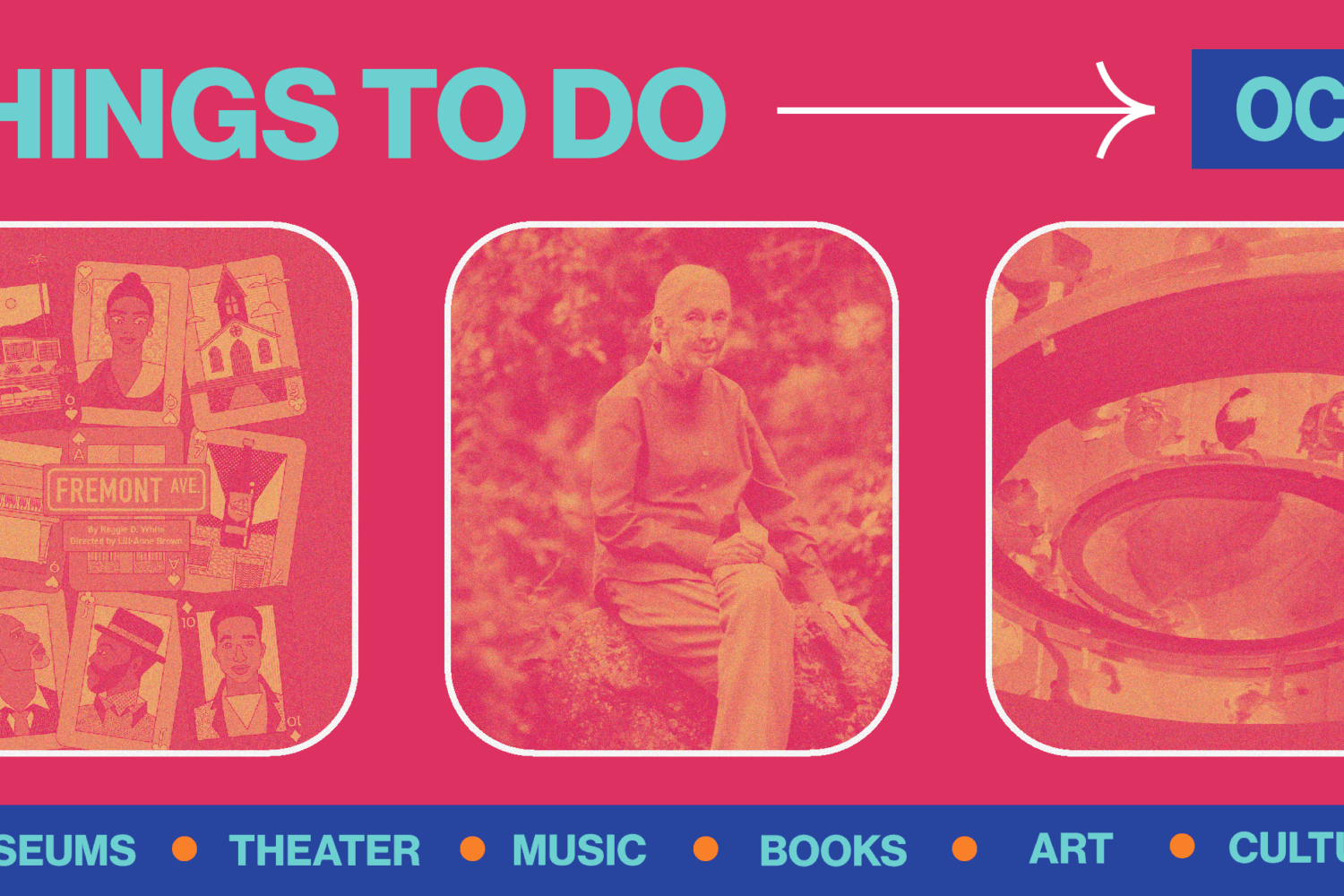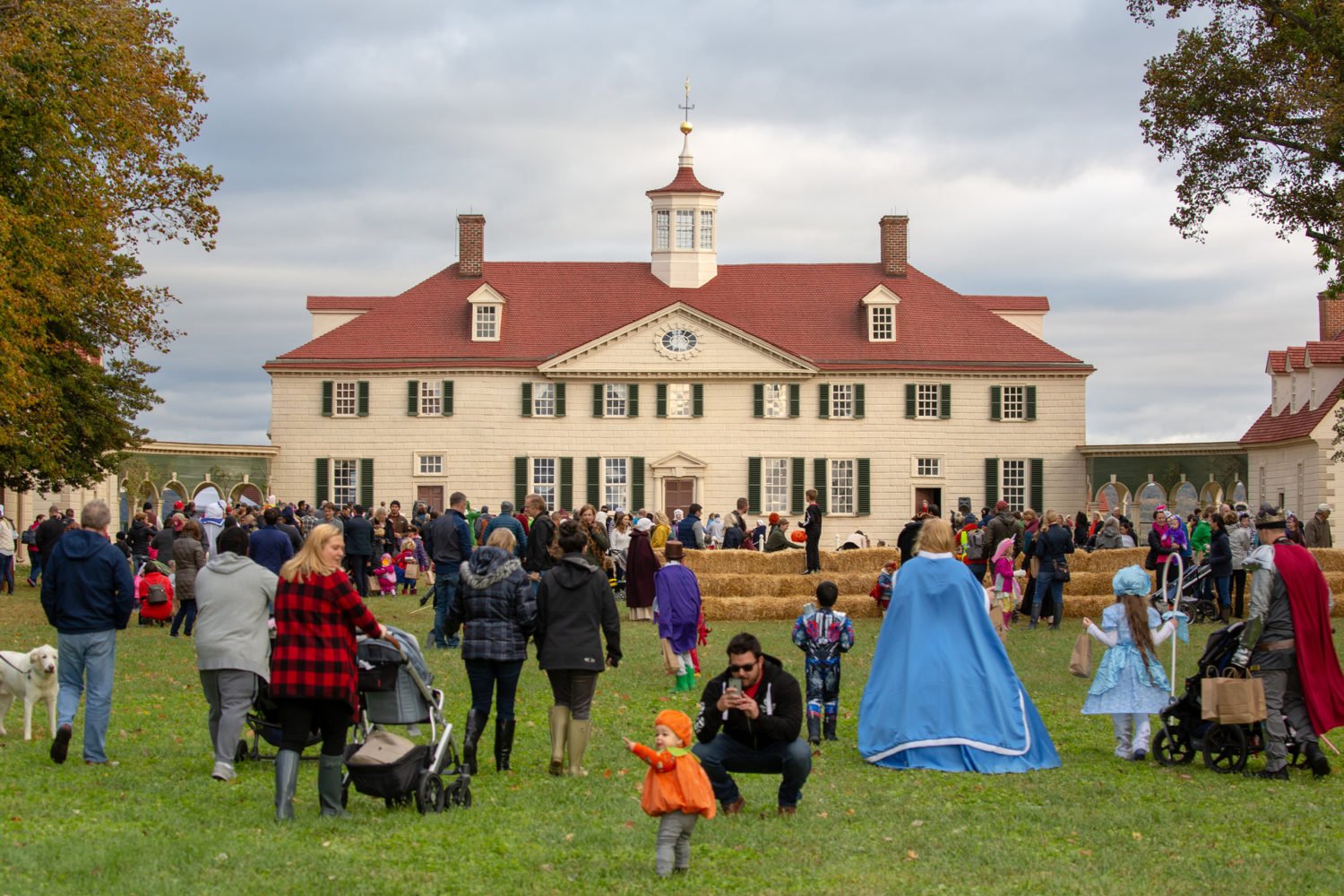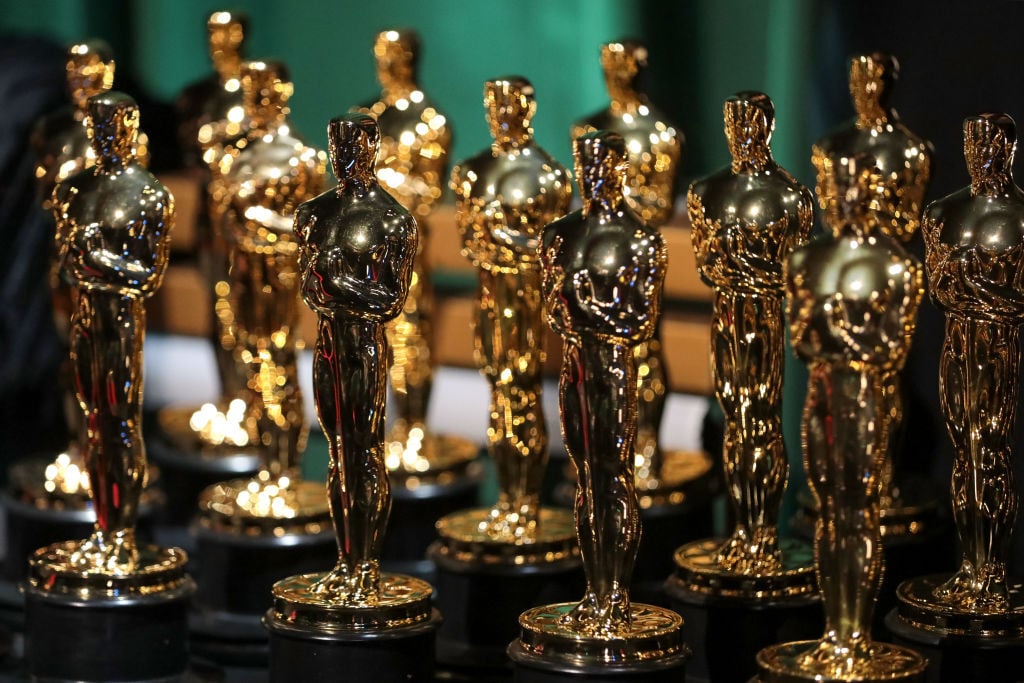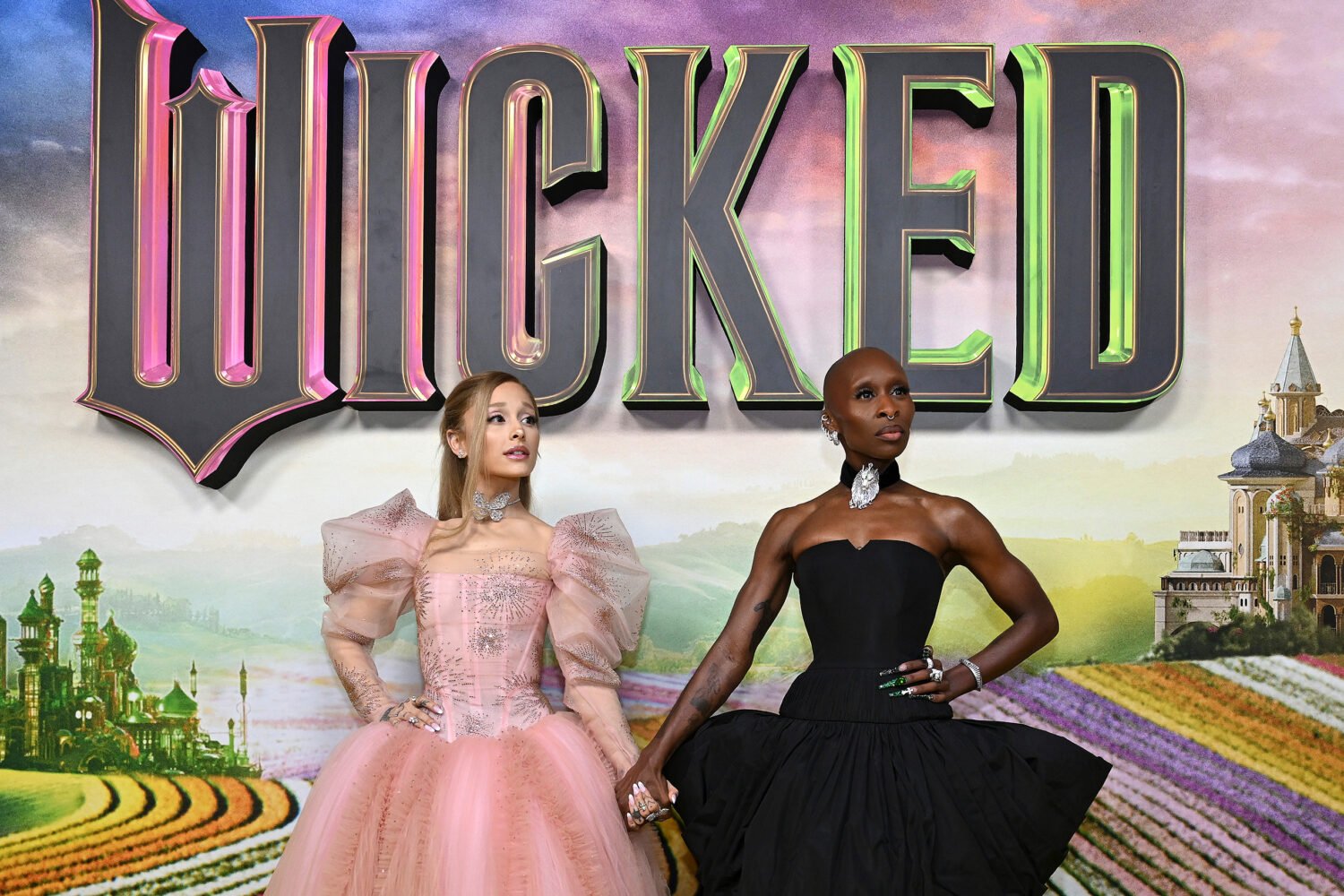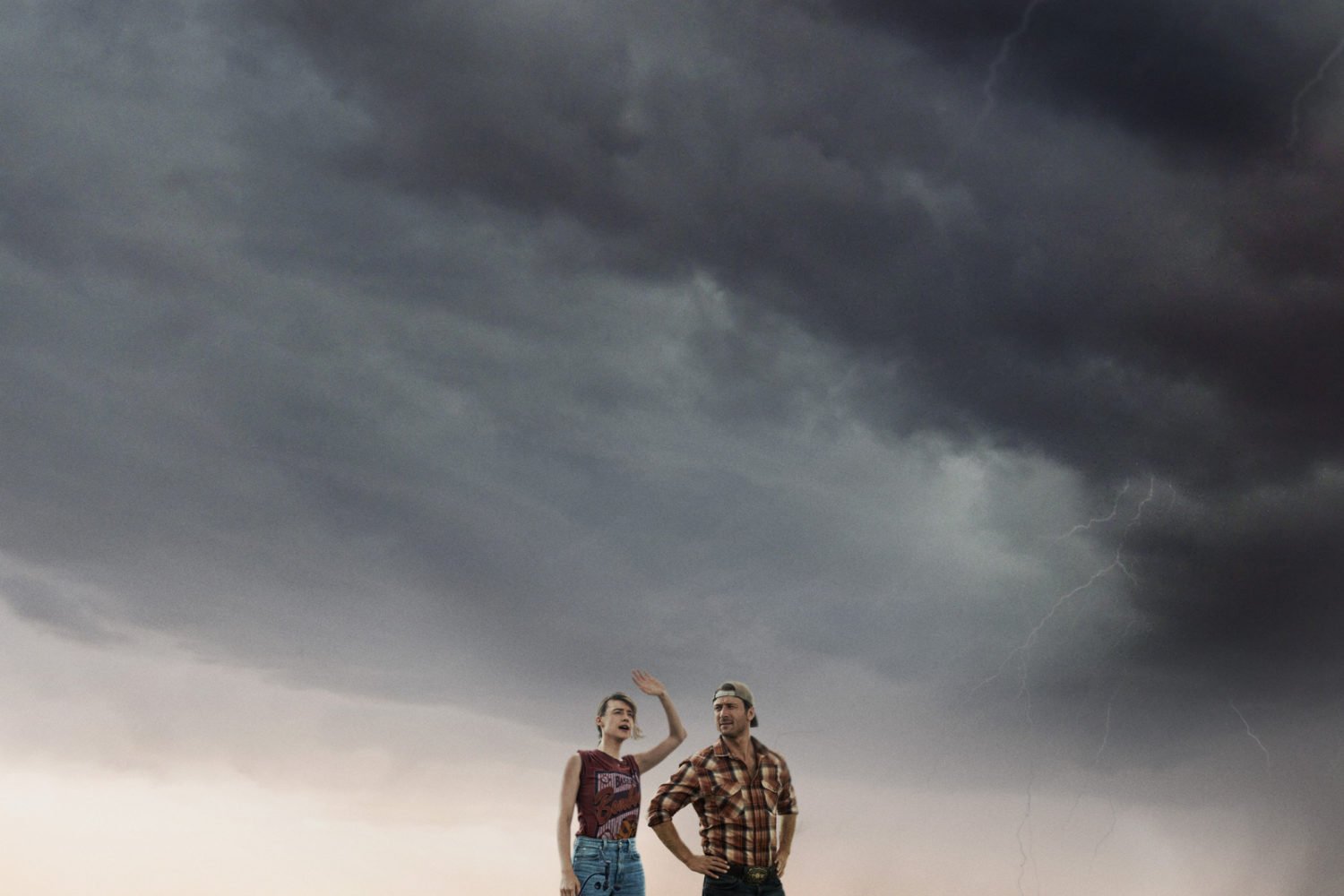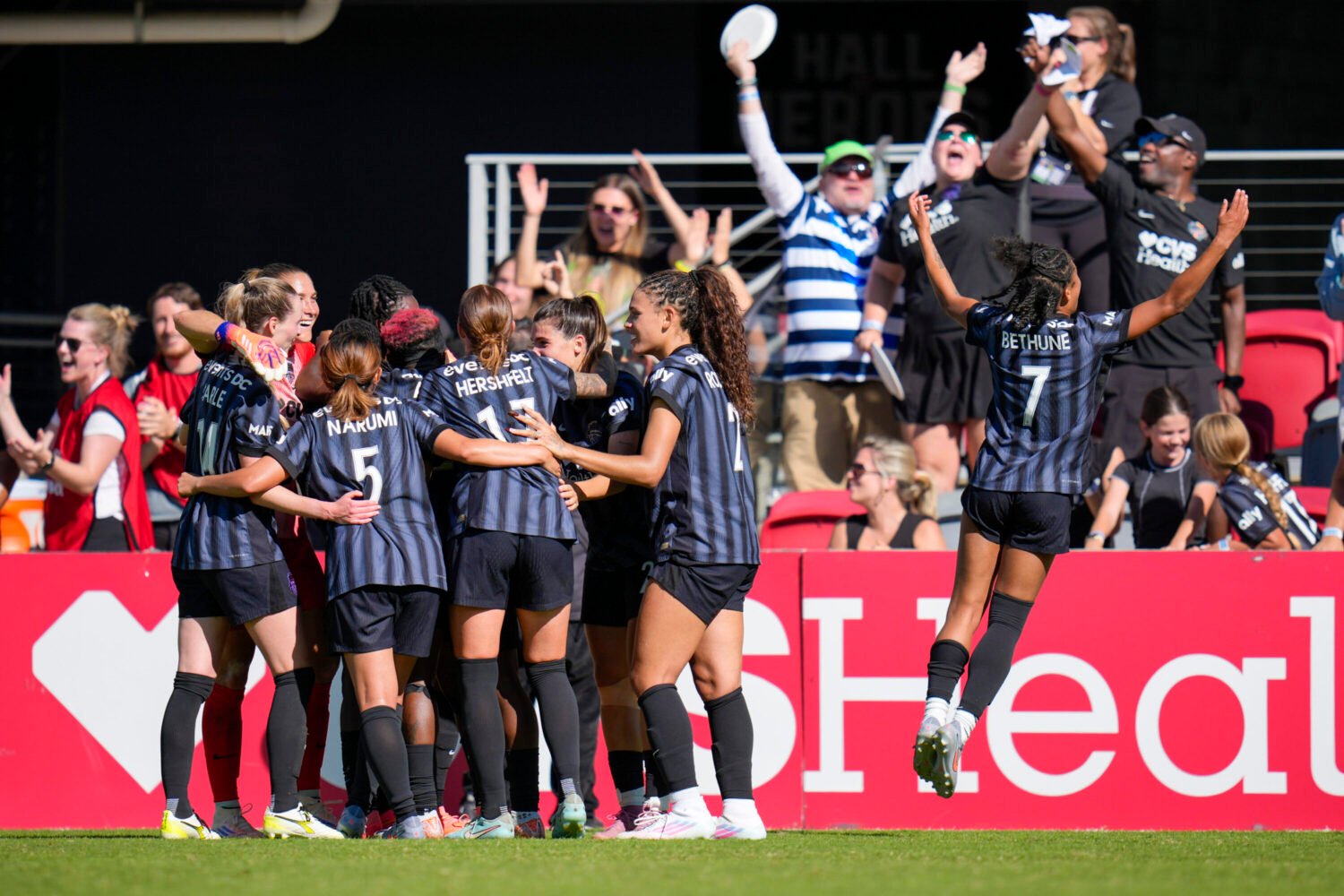The local film scene is abuzz this week with the kickoff of the ninth annual DC Shorts
film festival. But this Sunday also marks the local premiere of the indie flick
Not Waving but Drowning, screening at the AFI Silver Theatre. The music-driven movie tells the story of two
teenage girls in a small town in Florida, best friends who begin to head down different
paths when one departs for New York City and the other stays behind. It’s preceded
by
The Most Girl Part of You, a dark yet touching short film based on the story of the same name by Amy Hempel.
This is the first feature from director
Devyn Waitt, 26, who is from Oldsmar, Florida, and is produced by
Nicole Emanuele, also 26, a Rockville native. The two met and became friends while attending film school at Florida State University (where, full disclosure, this writer knew
both of them), and will attend Sunday’s screening. We chatted with Waitt and Emanuele
about the challenges of a first movie, screening to French audiences at the Champs-Élysées
Film Festival, and using Kickstarter to get a horse on a train.
Tell me how the movie and your partnership first came about.
DW: The idea started my freshman year of college, when I was 19—kind of from that overwhelming
feeling of being trapped and being anxious. I started writing the script after I moved
to New York [after graduation]. I went through this long period of restlessness, and
a lot of the characters came out of that. It was a year of writing and working on
it, and it was definitely a lot of getting to know the characters. It’s kind of a
collage; there were lots of little things I knew I wanted to include, so it’s more
like a novel in that you spend some time with these people and in the end maybe you
learn something, rather than setting things up in the first act. At times it felt
urgent that I be working on it, and at times it became distant. Like the characters—they
kind of wax and wane.
NE: We started working on this in 2008 or 2009, and I quit my job in April 2010 to work
on it full-time. Devyn and I were both delusional and thought it would take us one
year to make the movie—it’s been two years, so only twice as bad as we thought.
When did you decide to include the short,
The Most Girl Part of You, at the beginning?
DW: That was something that came about while we were in beginnings of preproduction. I
wasn’t super-happy with how
Not Waving but Drowning began, and I’ve been a huge fan of Amy Hempel since I was in college. I was thinking
about how
Girl would make such a great short film, and as I was walking home listening to music
and imagining it, I got excited about making it. I feel like not a lot of people see
short films . . . I liked the idea of putting a short with a feature so people could
see both, like it being a throwback to when you used to see a short film before a
movie.
What’s the common thread between the two?
DW: I felt like adding this other story brought the whole thing to completion and made
it feel more cyclical. I hate the term “coming of age,” but
Girl is one transition, going from a kid to a girl, and
Drowning is a second transition that I think happens at different ages for different people.
[Girl] is about a child becoming a girl and having her first sexual experience. I think
that transition is very obvious; we’re used to seeing that in film, and by setting
that up it makes it more open to the fact that
Drowning is another transition. So though these are different stories with different characters,
it could have been one person. I think there are a lot of similarities between the
relationships themselves, in the sense that they’re these symbiotic relationships.
[In
Girl], Amy relies on Big Guy to be the mouthpiece in their relationship, and then they
lose each other, so there’s the idea of having to grow that other half that you relied
on in the friendship. The more I analyzed it, the more I could find a lot of things
that were really similar between the two.
Since you had this idea when you were a few years younger, Devyn, how has your relationship
to the story or the characters changed?
DW: That’s the hardest part actually, because the girls are supposed to be around 19 or
20, and so much in the movie felt really important and pressing [when I was that age].
By the time I was done with the script, that had changed. A movie is a long process,
and I felt I was not in the same place as I was when I wrote it. I feel so different
from girls in the movie. But there’s something kind of sweet about it now, this slight
immaturity that the girls have and I think I had after writing the script. The fact
I was so close to the age of the characters—it aggravates me, but I think it’s fitting
because it’s close to how the girls are.
This is the first feature for both of you. What was the hardest part of the project?
DW: I think the hardest thing has been moving on from the movie because I was so wrapped
up in it and it’s been such a big part of my life for so long. Everything else became
second to it in a way that was pretty unhealthy and maybe not the way I would go back
and do it again, but was the only way I knew how to do it.
NE: We had really bad car luck shooting in New York. Our vehicle that was supposed to
be a main part of the story and was being used as a production car was totaled—although
the driver was totally okay. The next day the car we borrowed from my friend to replace
that car was in a hit-and-run, and day after that, a van we were using that had props
in it was broken into. All this happened within three days. I was literally throwing
things at the wall. But when it rains, it pours.
There’s also the scene in
Drowning
that features a white horse in a train car. I’m sure that wasn’t easy to coordinate.
NE: We had planned that scene from the beginning, so I’d been speaking to the location for
three months out. Then a week before they told me their legal department said a horse
was a no-go. I told them about the horse three months before, and they strung me along,
so then I had to find a new location—a new subway car to put a horse on—within a week.
It took some creative sacrifice and some production sacrifice. You always have to
stay on your toes.
That scene was funded by a Kickstarter campaign. How did that work?
NE: We thought, “If I were someone who was donating, what would get me excited?” What
made our movie a little bit different? We focused on a scene where we were doing something
exceptional that people hadn’t seen before—it’s the only movie I know of that has
a horse on a train. The name of our production company is White Horse Pictures, and
when we were flying for houses to film in, someone noticed our letterhead and called
me and turned me on to Fairwinds [Stables and Tailwinds Farms, in Maryland]. They
train horses and have a lot of stunt horses, so they drove up to New York from Maryland
with their horse.
The music is an important element of the film. How did you choose the songs?
DW: The majority of the music is original [composed by another FSU alum,
John Ross], and the stuff that’s not you’d probably recognize, like the Cranberries and Fleetwood
Mac, and is playing as part of a scene, on a car radio or in a store. I wanted people
to be able to sit back inside the feeling of the movie and just be in it without having
to pay attention to story. We never wanted the music to feel like a score so it needed
to be engaging enough on its own. We gave the music a lot of weight in the creative
process. John had so many ideas, and it was also important to me that it be somewhat
consistent; I wanted it to be a storytelling voice as well. John’s voice is in the
movie—he sings over some of the songs, so you have that person that comes up and keeps
singing like in
The Graduate. It took us as long to make the music as it did to edit the movie.
The films were recently part of the first-ever Champs-Élysées Film Festival in Paris.
Tell me about that.
NE: We were a part of the inaugural festival, founded by
Sophie Dulac, who is like a media mogul in Paris. She founded this festival, and it was amazing
to be a part of it. The festival approached us—we were part of a work in progress
program in Poland, where Devyn and I were invited to go to screen for international
sales agents when our film was in rough cut. We won first prize there. Then the film
screened three times in Paris.
DW: The screenings were really wonderful. People were really excited about Nicole and
me being there, I think. I really wanted to speak French to the audience, so I wrote
this whole big speech and tried to get the concierge at my hotel to help me practice,
and then I wrote it on my hand. So I got up and started trying to speak in French
and completely forgot the whole thing and had to read it off my hand. But everyone
was really nice about it. It was interesting because the French audience laughed at
completely different times. I don’t speak French, so I don’t know if that had to do
with the translation, but it was great to get a different take on the film. The movie
is set in Florida and New York, so I feel like it’s a really American story, but it’s
interesting having the perspective of people who grew up in a different way.
What are your hopes or expectations for the premiere at the AFI this weekend?
NE: I can’t tell you how much this screening means to me. I’ve definitely wanted to screen
near home, and the AFI has been there since I was growing up there. It really is the
one of the only places that celebrates film in the area I grew up in, so it has a
special place in my heart. I’m just so happy to screen there. To have my grandparents
be able to come, and my friends from growing up, is amazing.
I also hope we’re able to reach out to some girls that are in the key range for the
movie, 16 to 23. I hope the movie speaks to them. I remember movies that spoke to
me when I was that age, that had great music that I still listen to the soundtracks
of, and I would love for this movie to take that place for those girls, for them to
identify with it and feel like there’s something out there that was made for them.
DW: For me it’s just exciting to play for any new audience. I just hope people like the
movie!
What’s next for
Not Waving but Drowning?
NE: We’re working on distribution, domestically and internationally, seeing where the
movie’s home is going to be—whether it will be available in theaters or on TV or for
rental or in Redbox or on iTunes. We also have an international sales agent now, so
we’re trying to sell the movie in Venice this week and Toronto next week.
DW: Personally, I feel like I’ve made a lot of peace with the movie, and now I look at
it fondly and am excited to show it to people. So whether we find distribution—theatrically
would be my dream—or if we put it up on the Net for free, I don’t care. I’m just happy
it exists.
Not Waving but Drowning
screens at the AFI Silver Theatre this Sunday, September 9,
at 6:45 PM. Tickets ($11.50)
are available through the AFI’s website. Visit the film’s
Facebook page for more information.

